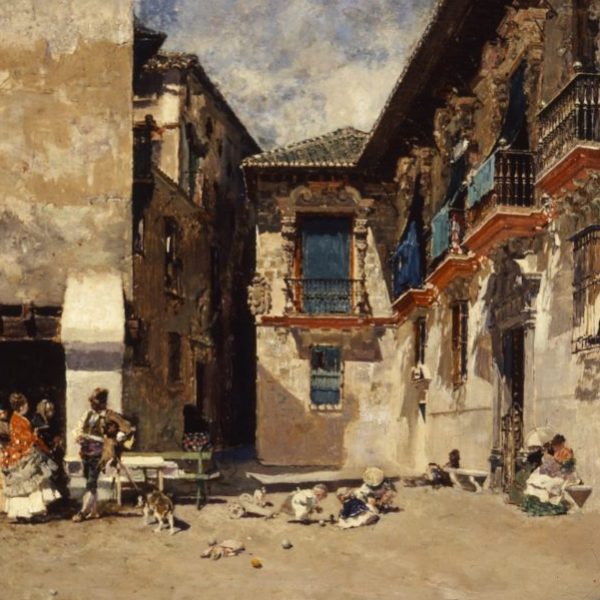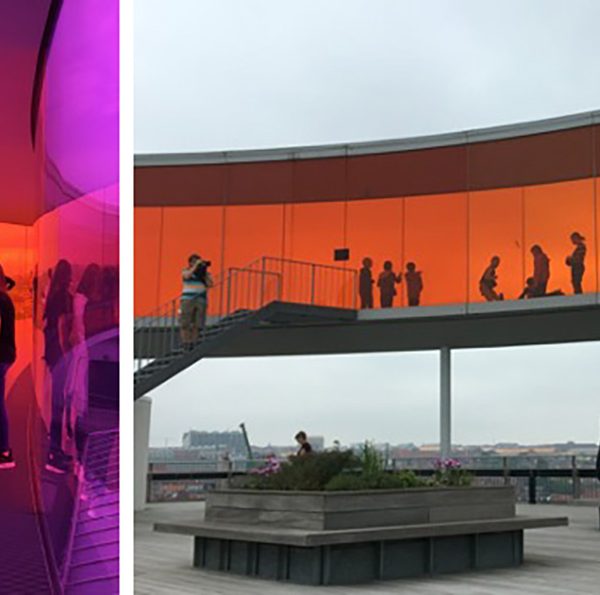Sneak Peek: In the Shadow of Velázquez by Jonathan Brown
 This June, we will publish a new book by the eminent art historian Jonathan Brown. Entitled In the Shadow of Velázquez: A Life in Art History, it blends personal history and art history to show the interrelationship between the two in a life devoted to the study of Spanish art. At turns funny and erudite, autobiographical and art historical, Jonathan Brown’s new book is engaging and delightful. We have a short excerpt to share with you today; in it, Brown describes his first trip to Spain, as a junior study abroad student from Dartmouth. This was in 1958–59, Franco years, at which time it was an act of rebellion, in Brown’s estimation, to spend a year in Madrid. But this experience afforded him his earliest visits to the Prado museum, and, as the excerpt continues, served to set his course through graduate school and to his first professional position.
This June, we will publish a new book by the eminent art historian Jonathan Brown. Entitled In the Shadow of Velázquez: A Life in Art History, it blends personal history and art history to show the interrelationship between the two in a life devoted to the study of Spanish art. At turns funny and erudite, autobiographical and art historical, Jonathan Brown’s new book is engaging and delightful. We have a short excerpt to share with you today; in it, Brown describes his first trip to Spain, as a junior study abroad student from Dartmouth. This was in 1958–59, Franco years, at which time it was an act of rebellion, in Brown’s estimation, to spend a year in Madrid. But this experience afforded him his earliest visits to the Prado museum, and, as the excerpt continues, served to set his course through graduate school and to his first professional position.
If you have easy access to New York City, the Frick Collection will host Jonathan Brown for an event on Wednesday, April 30th at 6:00 pm to celebrate the forthcoming publication of this book.
Jonathan Brown—
Perhaps it is now time for a few remarks about the Prado as experienced by a youthful American student. As might be imagined, my parents were habitual museum-goers. Although the Art Museum of Springfield was of no special distinction, the city was not far from larger collections easily reached by driving an hour or so. I mention a few – the Worcester Art Museum, the Wadsworth Atheneum in Hartford, Connecticut, the Smith College Museum of Art in Northampton, Mass., and the Clark Institute in Williamstown. needless to say, I had also been brought to the Metropolitan Museum of Art, although for some reason or lapse of my memory, never to MoMA. No matter the size, these museums were well-kept and well-lighted. To one degree or another, they had public events, including exhibitions and educational programs. Obviously the increase of interest in art museums over the last thirty years has transformed these institutions in ways that nobody could have predicted. Nonetheless, at the time the comparison between the Prado and these wealthy American museums was not favorable to Spain. Indeed, as I traveled through the country it was obvious even to my untrained eye that the great cultural patrimony was threatened with devastating losses through neglect and decay. (I hasten to add that this situation has now been remedied.)
But to return to the Prado of 1958–59, as I say, I was struck by the absence of visitors, except on Sundays. As Professor Sánchez Cantón led our small group around the museum, we never had to jockey for space, nor did we impede the sightline of members of the public. The lighting was dismal; I eventually learned to visit the eastern galleries in the morning and then switch to the western galleries to catch the afternoon sun. As for amenities, there was a cafeteria at the southern end, near the Puerta de Murillo. The space was small and cramped, with a limited menu (although I must say that the cooks made a delicious tortilla de patatas). The rather dingy impression made by the collection was a consequence of surfaces and paintings that had not been cleaned and walls that had not been painted within recent memory. One happy consequence of the inertia was that the pictures were never moved. Until recently, when the installation changes with some frequency, I could locate by memory where all the pictures were hanging during my student days.
Part of the problem stemmed from the fact that the Prado had few if any curators. I was not then in a position to analyze the administrative structure of the museum. A few years later, a visit to the Director’s office revealed the presence of one curatorial staff member, the subdirector. The problem with the Prado was easy to identify; it was starved of money. To visitors from abroad, the museum looked like a warehouse of masterpieces of western European painting. To my innocent eyes, it was heaven, so much so that I came to the decision to make the study of these pictures my life’s work. Ironically, my post-adolescent rebellion was determined by my parents’ passionate love of contemporary art. As I stood as close as I could in front of Las Meninas and focused on almost any part of the canvas, I could see an immediate resemblance to Jackson Pollock. Such is the folly of youth. Upon reflection, this reaction is not as misguided as it may appear, if you are willing to accept Velázquez as a gestural painter of the seventeenth century; I will develop this notion in the fifth chapter.
I returned to Dartmouth for a final year, concentrating on Spanish literature, there being no one at the College who knew about the art of Spain. I do, however, wish to acknowledge the influence of Professor Robert Russell, the noted scholar of the novels of Pérez Galdós. Bob may have physically inhabited the Hanover Plain, but his head was always on the meseta of Castile. He gave me the confidence to think that I might be able to make a mark in the academic world. When it came time to choose a graduate school, I saw that enthusiasm could carry me only so far. There were then three senior Hispanists teaching in American universities – Harold Wethey, University of Michigan; George Kubler, Yale; and José López-Rey, at the Institute of Fine Arts. Thanks to the copious scholarship of Chandler Post, Harvard had a reputation for the study of Spanish art and an excellent photo archive that Post had bequeathed to the Fogg Museum. However, when he retired, he was not replaced. I applied for admission to all but Michigan, which seemed too far away. And for some reason, I made an application to Princeton, which of course had a renowned department of art history but lacked a Hispanist. The results were not heartening. Both Yale and Harvard rejected my applications; the Institute of Fine Arts accepted me as a provisional student – the same outcome as my application to Princeton. Having heard that López-Rey was a fine scholar but an impatient advisor, I threw my lot in with Princeton.
In 1960, when I matriculated as a Ph.D. candidate in the Department of Art and Archaeology, Princeton was a small town with a decidedly rural character. Just beyond the city limits was a large dairy farm, which asserted its presence when the wind came from the east, delivering a pungent cloud smelling of cows and manure that enveloped the town. Potato farms were another feature of the area. To a native of New England, Princeton had a southern flavor. Having once experienced student life in a small town, it may seem perverse that I elected to repeat the mistake I had made in going to Dartmouth. There was this difference – Princeton was an hour’s train ride from New York.
The Department of Art and Archaeology was one of the oldest art history departments in the USA and was particularly noted for its achievements in the field of medieval art. The department was small; only six or seven Ph.D. candidates were admitted every year. By the time I arrived, the department’s interests were broadening but not to the extent of including Spanish art. It is a matter of fact that I never studied Spanish art during my graduate school years, except for a stimulating course on Spanish Baroque architecture offered at Columbia University by that blithe spirit, René Taylor, who was there for a year as a visiting professor. The menu of seminars I sampled was diverse indeed. I participated in Erik Sjoqvist’s seminar on Pompeian wall painting. With John Rupert Martin, we investigated the Carracci brothers and their patronage by the Farnese family. Renssaeler Lee’s course on Watteau was an extraordinary experience; Lee came to art history with a Ph.D. in English literature and I believe he had memorized all the plays of William Shakespeare and had a quotation from the bard to suit every occasion. He was a keen student of artistic theory, one of the last in the line of humanist scholars whose origins dated back to Renaissance Florence. Most compelling of all was the medievalist Kurt Weitzmann, who had been the favorite pupil of Adolph Goldschmidt, a universally admired professor of art history at Berlin. In seminars on Carolingian Bible illustrations and twelfth-century ivories, Weitzmann embodied rigorous Germanic scholarship. Every graduate student was required to participate in one of Weitzmann’s seminars; some survived, some perished, and a few escaped with only bruises.
Hovering over the department was the professor of art history at the Institute for Advanced Study, which has always been independent of the university. This was Erwin Panofsky, the most influential art historian in the world. Panofsky taught a seminar at Princeton from time to time; I shudder to think that I did not enroll simply because I was scared to death. Even when absent, however, Panofsky’s text-based method was omnipresent and had seeped into the mental world of everyone associated with the department.
I forged a connection of a less formal sort with the rising young star of the department, Robert Rosenblum. In 1963, I was appointed as his assistant in a lecture course on the history of modern painting. Rosenblum was the most facile lecturer I have ever heard. He spoke rapidly, as if reading a text at high speed, never missing a beat. However, it was all improvised from notes. As his assistant, I spent a lot time in his company and could study an innovative scholar at first hand. He was then working on his ground-breaking book Transformations in Late Eighteenth Century Art (1970), in which, among other things, he demonstrated his characteristic admiration for art outside the mainstream of Europe and the United States. He was responsible for bringing Caspar David Friedrich and the German Romantics to the attention of the English-speaking world. At the same time, he was one of the early supporters of Andy Warhol. For this reason, he was an aficionado of Spanish painting, all of which, it seemed to him, was eccentric, nonnormative, and slightly outrageous. He was one of the few American art historians who knew and admired the sculpture of Francisco Salzillo. Seeing the art of Spain through the somewhat jaded eyes of this inimitable art historian provided an unbelievably liberating effect on the study of my subject of interest.
Looking back on my graduate education, I am still struck by the apparent lack of a coherent scholarly agenda. Later on, I could see that despite the chaos of my course of study, I had profited from the experience of working with excellent, disciplined scholars, who offered encouragement at every turn. Princeton provided another advantage, which was the emphasis on clear expository prose, a necessary tool for the kind of narrative art history I was suited to practice. As time passed, the language of art history was infiltrated by the extensive use of jargon and neologisms. As I hoped to expand the audience for my studies of Hispanic art, the technique of clear narrative exposition was the best strategy to accomplish this goal. The virtual absence of formal study of Spanish art liberated me from the prevailing doctrines; or to put it differently, it provided a place to stand outside the mainstream and observe the complex web of art history as practiced in Spain. In 1965, I accepted the appointment of assistant professor in the Princeton department, where I remained happily until 1973.

























